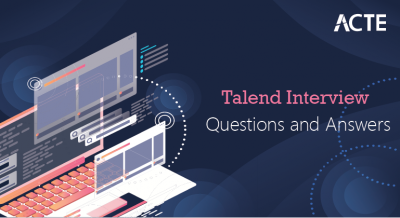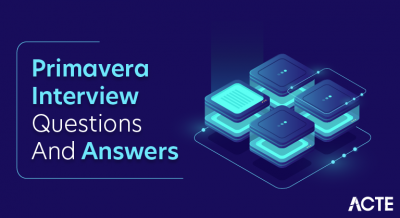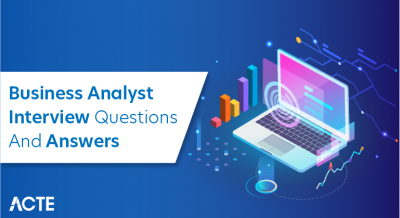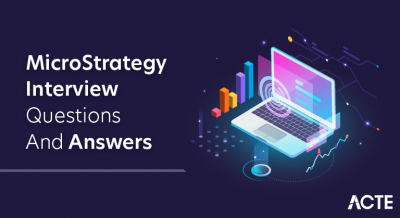
Agile interviews assess understanding of Agile principles, Scrum’s roles and ceremonies, tool proficiency, user story management, sprint planning strategies, success metrics application, continuous improvement approaches, and handling challenges, collaboration, conflict resolution, methodology integration, and scaling strategies within Agile environments.
1. What is the Agile methodology?
Ans:
Agile methodology is the approach to product development that involves the separating a project into tiny parts. The agile team collaborates with the stakeholders and clients for the improvement in an every development stage.
2. What is the key difference between an Agile and Scrum method?
Ans:
| Aspect | Agile | Scrum | |
| Framework |
A methodology with various frameworks. |
A specific framework within Agile. | |
| Approach | Flexible approach to project management. | Iterative approach to managing projects. |
3. What is the difference between Agile and a traditional waterfall process?
Ans:
Agile methodology : In Agile, the team can simultaneously work on the different phases. Agile is influenced by a customer feedback and uses team collaboration.
Traditional waterfall process: The team needs to be complete each phase before working on next. Waterfall doesn’t take the user feedback and external collaboration mid-process.
4. What is the difference between burn-up and burndown charts?
Ans:
Burn-up chart: The burn-up chart shows amount of the completed work along with the total. In this chart, the line goes from a bottom to upwards.
Burndown chart: The burndown lets view the remaining job that needs to be done. In burndown chart, the line moves towards a bottom from the top as the team progresses in the project development.
5. Define roles in Scrum?
Ans:
Product owner: The product owner understands a customer demands. Thus, determine a product’s features and lists them priority-wise. Moreover, they have the vision for entire team and for increasing the ROI.
Scrum master: The scrum master leads project and scrum team. It helps them adopt agile methodologies. They assist product owner to understand the features and process.
6. What is the right moment for using the agile model?
Ans:
Work category allocation: It provides the complete transparency over where invest a time and shows task priority in order.
Defect removal awareness: This helps in producing the quality products by active members.
Sprint burn down matric: When need to track the completion of work using the sprint.
7. What is Product Backlog & Sprint Backlog?
Ans:
The difference between these two backlogs is that Product Backlog consists of all requirements and modules of a product. It gives an information about the tasks that must be completed. Additionally, it includes whole procedure needed to carry out these activities to reach the goal.
8. How does deal with Score Creep?
Ans:
To deal with the score creep, can follow these steps:
- Step 1) Daily monitoring of work closely.
- Step 2) Aligning the vision of team with proper communication.
- Step 3) Regularly review a project requirements VS what was delivered.
- Step 4) Avoid adding an extra features that weren’t in original scope.
9. What is a test stub?
Ans:
Test stub is the small code that can replace a specific component by imitating it. The stub provides the consistent results and produces a same output as the original component.
10. What is the importance of daily stand-up meetings?
Ans:
The daily stand-up meetings are important team discussion meets where each contributor reports the work progress. They discuss how to resolve a technical issues, the actions required to complete the remaining project, etc.
11. What is Scrum of Scrums?
Ans:
Scrum of Scrums is the meeting held by teams working on particular project to coordinate and work together to deliver the solution. An ambassador from every team represents a unit in this meeting.
- The main topics are in this meeting are:
- The progress of unit after previous Scrum of Scrum.
- Tasks that need completing before a next meeting.
12. What is agile testing?
Ans:
Agile testing is the practice used for software testing. It is carried out by the testing team that receives a piece of code, and the test is done simultaneously during the development of the product. It incorporates end-user requirements; hence agile development takes place parallelly.
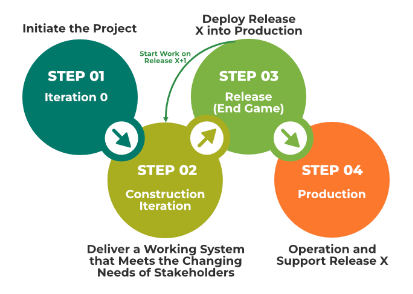
13. What are the true skills of a good agile tester?
Ans:
Test automation and tech knowledge: A good agile tester has to enough technical knowledge to know which tests and what parts of test can be automated.
Understands quality assurance VS testing: The ideal agile tester knows difference between quality assurance and testing. Hence, they ensure the product has quality from start.
14. What kind of project is suitable for Agile Methodology?
Ans:
Agile methodology is the most suitable for a frequently requirement-changing projects. This testing method can continuously deliver the valuable test results with its a time-focused iterative manner.
15. What is Kanban?
Ans:
Kanban is the software that provides the visual representation of the work progress. It tracks the development of project as it travels through a process. This system also regulates the supply of the components for the project using a card that is sent down manufacturing line.
16. What is the velocity of a sprint, and how is it measured?
Ans:
A Sprint’s velocity is a total number of tasks the team has done in a Sprint. It is team’s rate of progress sprint by sprint. Velocity is then measured by diving the number of story points achieved in the finished sprint with the total number of a completed sprints.
17. Explain Scrum Master.
Ans:
The scrum master’s role is to lead a project and guide the scrum team. This individual must shield team from any interruptions that could affect a team’s focus. Scrum master helps the team achieve the sprint goal and also assists them in an adopting the Agile methodologies and Scrum principles and applications.
18. What is a “build-breaker”?
Ans:
A build breaker is the circumstance that occurs when a bug arises in a software. This unforeseen situation leads to be failed execution, breaking of the compilation process, or warning generation. In such cases, tester is expected to bring the software back to its original functioning state by fixing a bug.
19. How does agile methodology work in testing?
Ans:
Step 1)The testing begins as a development of the software starts, so testers analyse every feature and module that is created.
Step 2) Next, they break down feature development of a product into smaller sections to make them manageable.
20. When do you choose Agile methodology?
Ans:
- This method suits continuing the projects and developments which have missing details in starting stage.
- It is also useful for a projects that do not have enough resources or lacks clear timelines. For example, if creating the fresh product, will encounter many challenges.
21. What does Artifacts of the Scrum Process?
Ans:
Product Backlog: This is the list that contains freshly added features, modifications made in the features, infrastructure changes, bug fixes, etc., to determine if particular output can be acquired.
Sprint backlog: It is the subdivision of the Product Backlog, which consists of tasks the team focuses on to meet sprint goal.
22. What does Scrum-ban?
Ans:
It is the methodology that combines the Scrum and Kanban agile frameworks. In this method, get the structure of Scrum and the visualization and flexibility of Kanban. Scrum-ban is used to reduce batching of tasks, adopt pull-based system, and meet the other team requirements.
23. What does Sprint 0 and Spike?
Ans:
Sprint 0 is a little effort used in creating the rough framework of the product backlog. This also includes the details of estimated time of release of products. The purpose of Sprint 0 is to build the project skeleton, user stories, story mapping, and usable product in a minimum time frame.
24. What does user story Mapping?
Ans:
User story mapping means the arranging user stories depending on priority and the horizontal axis. The vertical axis represents progressing levels of complexity. In this mapping, product manager and developers list down the tasks that will be a valuable for end users.
25. What does Empirical Process Control in Scrum?
Ans:
Empirical Process Control refers to the task that is based on experience, observations, evidence, experimentation, and facts. This process is followed in Scrum to make sure project progresses, and interpretation is made based on the observations and facts.
26. What does significant parts of the Agile process?
Ans:
Adaptability: Adapt to all changes and new requirements.
Efficiency: Every individual needs to be an efficient and continuously improve with feedback for a quality outcomes.
Collaboration: All parties must contribute to a project’s goal.
Disruption: Changing traditional method for a customer.
27. What does principles of agile testing?
Ans:
Customer satisfaction: The customer needs must be a satisfied.
Welcome changes: The need for change must be an addressed.
Working together: The developers and the other units must collaborate.
Face-to-face communication: Real-time face-to-face conversations are the best for agile testing.
28. What does some popular Agile tools?
Ans:
- Jira
- Zoho
- Trello
- Yodiz
- Asana
- Jenkins
- Maven
- Docker
- Kubernetes.
29. What does Scrum poker technique ?
Ans:
Scrum Poker, or Planning Poker, is the card-based agile method applied for a planning and estimating. Here steps on how planning poker takes place:
Step 1) Every estimator has a Scrum Poker cards with the values like 0,1,2,3,5, etc., that indicate story points, ideal days, and the other estimation measurements used by the team.
Step 2) The product owner has discussion with every estimator and then chooses the card privately based on their estimation made individually.
30. Differentiate between agile testing methods and Waterfall testing?
Ans:
Agile Testing : This testing takes place along with the development, In this method, there are no time delays between the testing and coding . It is a flexible method.
Waterfall Testing: It is done only after the phase of development is completed. There are delays between the testing and coding. The Waterfall is the rigid method.
31. What does most critical agile matrices?
Ans:
Velocity: This helps track a project’s velocity so the team can know about its progress and the other metrics.
Issue removal awareness: As team members work efficiently and remove the issues simultaneously, it improves a product quality.
Work role allocation: Providing the role and category of work for a teams helps in segregating a task priority accurately.
32. What does major Agile quality strategies?
Ans:
- Code analysis
- Iteration
- Short feedback sprints
- Refactoring
- Inspections and reviews
- Guidelines and standards
- Milestone reviews.
33. When does not to use Agile?
Ans:
- If the requirements are the flexible or not.
- Can split the functionality.
- If customer is available or not.
- Is team skilled enough for Agile testing?
- Will your time permit it.
34. What does “refactoring”?
Ans:
- Refactoring is the procedure of optimizing and updating an internal structure of a product without modifying its external functions.
- It is done to improve or enhance a structure beneath by making changes to its source code. The developers use this process to make a code more readable, clearer, and understandable. Additionally, it also makes a code easy to maintain.
35. Mention where does Scrum and Kanban methodologies can be used?
Ans:
When need to move from an appropriate and prominent process, can use Scrum. In case there is requirement to improve the existing process with the minimal changes, can use Kanban.
36. What does different kinds of Agile methodologies?
Ans:
- Kanban
- Scrum
- Extreme Programming (XP)
- Feature Driven Development (FDD)
- Dynamic System Development Method (DSDM)
- Lean
- Crystal.
37. What does Product Road Map?
Ans:
A product Roadmap is the tool that tells how the product will develop over time. It is the complete view of the features that build a product vision. This tool specifies which development is taking place, the issues that product will solve, the business goals that it will fulfil, and more.
38. What does some challenges that team faces in the Agile process?
Ans:
Changing requirements: Change in a product’s requirements, features, and specifications.
Slow feedback loop: Feedback between tester and developer may be slow at times.
Skipping important tests: Keeping some tests on a hold because of limited time.
39. Describe the merits of Agile Technique.
Ans:
- It is fastest and most flexible technique available for a testing.
- The customers can ask for the modification anytime in development stage.
- Regularly delivers the products so the clients can see software at an early development phase.
- It ensures customer satisfaction as a team focuses on demands of the clients.
40. Describe the demerits of Agile Technique.
Ans:
- It lacks the documentation due to frequent requirement changes.
- Due to unknown requirements, calculating a time needed to complete project is difficult.
- The outcome of technique cannot be foreseen.
- Required time and resources for product cannot be estimated.
41. Why does companies adopt Agile methodology?
Ans:
Faster time-to-market: Its incremental approach and continuous delivery reduce a time-to-market while creating a products.
Quick ROI: The reduction in the time-to-market helps in getting after ROI.
High product quality: is the continuous improvement process; thus, it helps create a superior products with its iterative approach.
42. How does Agile save money?
Ans:
Agile methodology prioritizes the completing tasks that add value to business. Hence, the team requires to produce the just enough documentation to complete the task instead of creating the waste with excessive documentation. This makes Agile cost-effective as it takes a less time than the traditional technique.
43. How does deal with distributed teams in Agile?
Ans:
- Distribute the work uniformly and allocate the tasks.
- Hire dedicated and self-reliant individuals to bring a vision to life.
- Can create co-located units and allow them to find ways to share tasks.
- Invest in the collaboration tools for a better teamwork.
44. What does release candidate?
Ans:
- Release candidate means the version of a product that is ready to be released but not yet approved. This product is possible, stable version internally released for a final check.
- To become release candidate, an application must undergo an extensive testing process to ensure it satisfies all criteria.
45. What does difference between Agile and traditional software development methods?
Ans:
Agile method : This method is used to develop a complex software. Development and testing are done simultaneously. Runs with an iterative organization structure. Comes with the high security.
Traditional method: It is used for a building simple software. It is conducted after t development. Uses the linear organization design. Has less security.
46. Define Incremental and Iterative Development in the Agile methodology?
Ans:
Incremental Development: Most of the agile teams choose the Incremental development. It is the distribution of huge tasks into the smaller parts to build the product piece by piece.
Iterative Development: A huge product is divided into the small parts in this type of development. A new feature code is written and tested in the cycles till it runs without defects.
47. What does SAFe team?
Ans:
- SAFe, or Scaled Agile Framework, is the collection of operational and organizational designs that allows the companies to scale agile methodologies.
- It is the group of concepts, best practices, and procedures that let organizations adopt the Agile techniques such as Scrum, Kanban, and Lean for building quality products.
48. What does benefits of Scrum?:
Ans:
Benefits
- It suits projects with an imprecise and ambiguous requirements in early development phase.
- In Scrum, project is cut down into the small manageable sprints.
- Requires a less documentation and monitoring; hence, it is cost-effective.
- Each team member puts effort into the completing their job, which leads to high quality.
49. What does drawbacks of Scrum?
Ans:
- It leads to the scope creep as there is no accurate end date.
- Project failure is highly possible if individuals in a team are not cooperative and diligent.
- The team has to go through the rigorous testing process to implement quality.
- Large teams find it hard to be adopt Scrum.
- It is designed for a professionals only.
50. Describe many forms of burndown charts?
Ans:
Project burndown chart: This chart highlights a story point of every completed sprint.
Sprint burndown chart: A diagram showcases a amount of work left in one sprint.
Release burndown chart: Scrum master updates chart after each sprint.
51. What does scrum time boxing?
Ans:
Scrum time boxing is the strictly allocated time for certain task or event. All Scrum activities are time-boxed using the time-boxing device. Its key purpose is to increase efficiency and productivity by dividing a project into the distinct amounts of time.
52. Define Impediments in Scrum?
Ans:
- Impediments in the Scrum are any form of obstacle that stops a team from completing the tasks or a meeting goals. These impediments slow down the velocity and reduce a progress rate.
- It can occur in the several ways, like shortage of resources, power cuts, sick team members, lack of the support from management, technical issues, etc.
53. What does Agile?
Ans:
Agile is the software framework of behaviors and approaches encouraging in-time production, which enables the customers to receive the quality software sooner.
54. What does Agile frameworks?
Ans:
There are the several other frameworks in addition to Scrum, such as:
- Test-Driven Development
- Kanban
- Feature-Driven Development.
55. How long does the scrum cycle last?
Ans:
The life of the Scrum cycle depends on a project size and team size. The team size may vary from the 3 to 9 members. Usually, it takes the 3 to 4 weeks to complete the Scrum sprint.
56. Define epic, user stories, and tasks?
Ans:
A software feature defined by the customer and itemized in the product backlog is known as a epic. The subdivisions of Epics are known as the stories.
User Stories: User stories are prepared according to client’s perspective such as project or business functions, and delivered in the particular sprint.
Task: The user stories are further broken down into the various task.
57. What does test-driven development?
Ans:
Test-driven development or TDD is also known as a test-driven design. In this method, a developer writes an automated a test case describing the new function and then creates a small codes to pass that test, and later re-factors the new code to meet an acceptable standards.
58. What does right moment to use the agile model?
Ans:
Work category allocation: the work category allocation will provide the clear idea about where investing a time and also about the priority of the work.
Defect removal awareness: active members can produce the quality products.
The cumulative flow diagram: It is the uniform workflow checked in which x-axis represents time, and the y-axis stands for number of efforts.
59. What does Zero sprint in Agile?
Ans:
A zero sprint can be defined as a pre-step to the first sprint. Things such as setting up environment to develop, preparing backlog, etc. that need to be performed before the start of initial sprint and can treat as a Sprint zero.
60. Why does user stories not estimated in working hours?
Ans:
It is not mandatory to estimate user stories in the terms of man hurt as it will mean a lack of product quality, which is to be delivered to customer. In the case of working hour, more attention is given to a budget and cost of management.
61. How does velocity of sprint measured?
Ans:
If capacity is measured as the percentage of 40 hours week then a work is done = story points * team capacity.
In case capacity is measured in terms of a man-hours -> story points/team capacity.
62. What is the difference between Agile Vs DevOps?
Ans:
Agile: Developing Software, Each person can handle all the tasks, Since every developer can progress with a task, the agile approach is preferred, Scrum-based approach to be communicate.
DevOps: Deploying software, Separate teams for the operations and developments, Teams need to communicate in order to proceed to a next step, Regular meetings are held.
63. What are major agile quality strategies?
Ans:
- Refactoring
- Small feedback cycles
- Iterations
- Dynamic code analysis.
64. Name some project management tools used in agile?
Ans:
- Version one
- X-planner
- Icescrum
- Rally Software
- Agilent
- Agilo.
65. Define Product Backlog and Sprint Backlog?
Ans:
- A product backlog is maintained by a project owner that contains every requirement and feature of a product.
- A Spring backlog is treated as the product backlog subset that contains a requirements and features related to the particular sprint only.
66. What does Pair Programming and what state its benefits?
Ans:
Pair programming is the technique in which two programmers work as team where. One programmer writes a code and the other one reviews that code. They both can switch their roles.
Benefits
Knowledge transfer is smooth: One experience partner can teach the another partner about codes and techniques.
Code quality: As a second partner simultaneously reviews the code, the chances of the mistakes being occurred will reduce.
67. What does refactoring?
Ans:
Refactoring refers to a process of restructuring existing computer code without changing its an external behavior. The goal of refactoring is to improve the nonfunctional attributes of software, making it easier to comprehend, reducing its complexity, and increasing maintainability.
68. How does QA add value to an agile team?
Ans:
QA provides an additional value to story by thinking differently about distinct scenarios. It gives a quick feedback to the developers on whether a new functionality is working fine or not.
69. What is Application Binary Interface?
Ans:
The Application Binary Interface defines the interface to compile application programs or low-level interface between the application and the operating system.
70. What is a tracer bullet?
Ans:
- Tracer bullet examines a working and examines the feasibility of end-to-end process.
- It is spike with the current set of the practices or architecture.
71. What does increment ?
Ans:
The increment can be defined as a total of all backlog items of a product during the sprint. each increment consists of the previous sprint increment values. It should be set to be in available mode in its subsequent release as it is a step to reach a goal.
72. How does one manage remote teams?
Ans:
In the case of the outsourced resources, using a remote project management tools will help to meet the required remote team management. It helps to know how to get them on board, and manage people, tools, and resources.
73. What is a sprint retrospective meeting?
Ans:
It is the meeting conducted in the last part of a sprint after the review meeting of a sprint. The whole team will participate in this discussion, which lasts for the 2 to 3 hours.
74. “Can agile methodologies be applied to testing beyond development and software?”
Ans:
The file testing methodologies of an Agile can be applied in the case of biomedical, biophysics, biochemistry, and those places which are having an insufficient data and the project needs to complete with the small team.
75. What does impediment mean?
Ans:
Any obstacles that do not allow the smooth flow of work, which results in underperformance of the team to perform tasks in a better way is known as an impediment.
76. What does sprint planning meetings?
Ans:
The meeting that involves an entire scrum team from a product owner to the scrum master and the other team members is known as sprint planning meeting. It is arranged to discuss important feature of the team and also the items of a product backlog.
77. What does the X and Y-axis of the burndown chart?
Ans:
X-Axis (Horizontal Axis): The X-axis represents time, typically measured in the days, weeks, or sprints, depending on granularity desired. It shows the progression of a time from the start to end of the sprint or project.
Y-Axis (Vertical Axis): The Y-axis represents a amount of work remaining to be completed. It measures effort or work remaining, often in story points, tasks, or hours.
78. What is Scrum ban?
Ans:
Scrum-ban is the Scrum and Kanban-based model for a software development. This model is specifically used for projects that need continuous maintenance, have various programming errors or have a some sudden changes. This model promotes the completion of the project in minimum time for programming error or user story.
79. What is the Agile Manifesto & its Principles? Explain in brief.
Ans:
Agile Manifesto is the foundational document for a Agile software development methodologies. It outlines a core values and principles of Agile development. The manifesto was created by the group of software developers who gathered in 2001 to discuss the lightweight development methods.
Principles:
- Working Software should be a demonstrated at regular intervals
- Customer collaboration.
80. What’s the difference between Definition of Done and Definition of Ready?
Ans:
The Definition of Done (DoD) is the agreement that guides all developmental activities and states what is required for the piece of work to be considered “done.” The Definition of Ready (DoR) describes a requirements that must be met in order for story to move from the backlog to development.
81. Why does continuous integration in Agile important?
Ans:
Continuous integration is designed to support the small changes rather than large ones. This process can help teams reduce a risk associated with deploying a large chunk of code, resolve issues quicker, and improve quality of code since projects are broken into the smaller, more manageable pieces.
82. What is acceptance testing?
Ans:
Acceptance testing is the crucial phase in software development where a software or system is evaluated to determine whether it meets specified requirements. It is the final phase of testing process before a software is released to end-users or customers.
- def add(a, b):
- return a + b
- # Acceptance test
- assert add(2, 3) == 5 # Verifies if the addition function returns 5 when adding 2 and 3
83. What is vulnerability testing?
Ans:
Vulnerability testing, also known as a vulnerability assessment or vulnerability scanning, is process of identifying, evaluating, and prioritizing security vulnerabilities in the system, application, network, or organizational processes.
84. How does Agile teams create estimates?
Ans:
- The Project Level uses a Quick Function Point Analysis at the early stage of the project development.
- The Release Standard assigns a story points to user issues to prioritize them. It also specifies which issues are taken from a current release.
85. What are Scrum Master’s responsibilities?
Ans:
The following are responsibilities of the scrum master:
- Keeping a team motivated and focused on their tasks.
- Guiding all the team members so that they achieve a sprint goal efficiently.
- Building an organized and motivated team.
- Ensuring a team delivers as expected.
- Ensuring adherence to all the values, practices, and principles of Scrum.
86. Explain tracer bullet?
Ans:
The tracer bullet is the spike with the current architecture, the current set of the best practices, current technology set which results in the production quality code. It is not throw away code but might just be a narrow implementation of functionality.
87. What is a test stub?
Ans:
A test stub is the small code that replaces an undeveloped or fully developed component within system being tested. Test stub is designed in such way that it mimics actual component by generating a specifically known outputs and substitute actual component.
88. What does DoD mean?
Ans:
Definition of Done (DoD) refers to the collection of a deliverables, which includes the written codes, comments on coding, unit tests, integration testing, design documents, release notes, etc. This adds the verifiable and demonstrable values to a project development.
89. How does a Scrum Master be a Servant Leader?
Ans:
The term “servant leader” mainly focuses on a service orientation which a leader should demonstrate. The Scrum Master needs to be facilitator, a guide, a mentor, etc. This helps the team have increased the involvement, empowerment, etc.
90. Explain how does implement scrum in an easy way to your project?
Ans:
- Get a backlog in order.
- Get an idea of size of a product backlog items.
- Clarify sprint requirement and duration to complete a sprint backlog.
- Calculate team sprint budget and then break requirements into tasks.


